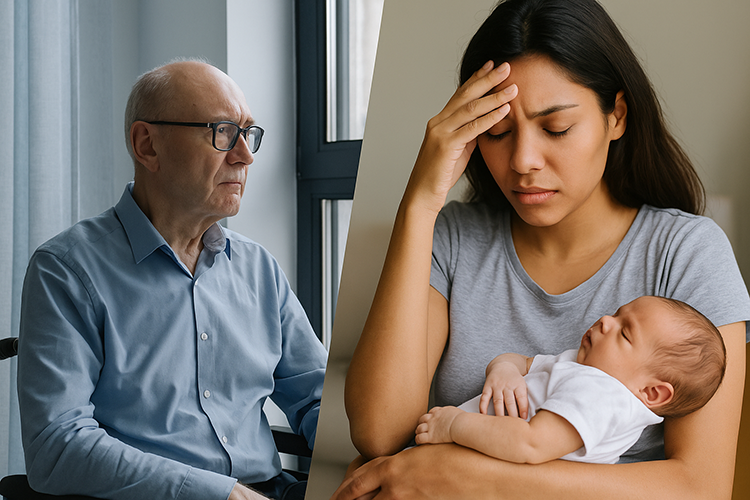2025-09-27
other

Questions of life and death test Europe’s conscience like few others. Assisted dying, abortion in cases of rape, and the limits of autonomy are contested across the continent. With no common EU law, each member state has drawn its own line, creating a patchwork that reflects history, religion, politics and shifting social values. On assisted dying, approaches vary widely. Belgium, the Netherlands, Luxembourg and Spain permit doctors to administer life-ending medication under strict safeguards. Austria and Germany allow assisted suicide after constitutional rulings, while Italy has a narrow pathway overseen by courts. Slovenia in 2025 became the first Central and Eastern European state to adopt assisted dying, restricted to terminal illnesses and subject to multiple reviews. France’s parliament has advanced a bill linking access to stronger palliative care, though it has yet to become law. Portugal’s efforts have been repeatedly shaped by its constitutional court. Poland, Hungary and Ireland prohibit assisted dying entirely, often under religious influence. Switzerland, though not an EU member, has shaped the debate. Its system allows assisted suicide but not euthanasia, with organisations such as Dignitas attracting foreigners. This “suicide tourism” has put pressure on EU neighbours where such choices remain illegal. Supporters of assisted dying highlight autonomy and dignity, arguing that those in terminal decline should control the manner of death. They point to compassion for those whose suffering persists despite palliative care. Transparency, they argue, is another advantage, as legal frameworks reduce the risk of unsafe, hidden practices. Opponents warn of abuse, citing Belgium and the Netherlands where eligibility has widened to psychiatric cases. They stress the sanctity of life, risks of coercion on vulnerable people, and the danger of underfunding palliative care. Public opinion is divided but influential. A Dutch survey in 2019 showed 87 percent support for euthanasia under conditions, while Spain’s new law was used by only 383 people in its first 18 months, a fraction of deaths compared with the Netherlands or Belgium. Surveys across Europe show far higher acceptance in the west than in the east, where cultural and religious traditions dominate. Abortion laws also divide the Union. Western Europe generally permits abortion on request up to 12 to 24 weeks, with exceptions later. France went further in 2024, writing abortion rights into its constitution. Ireland liberalised in 2018 after a referendum. Central and Eastern Europe, by contrast, remain restrictive. Malta allows abortion only in emergencies, and Poland bans it in most cases except rape, incest or serious risks to the mother’s life. In practice, even these exceptions can be difficult to access. Poland has become a focal point of the European abortion debate. In 2020 its Constitutional Tribunal struck down the fetal impairment exception, creating what amounted to a near-total ban. Protests swept the country, and opinion polls showed most Poles disagreed with the ruling. The European Court of Human Rights has since ruled against Poland in several cases, including one involving a 14-year-old rape survivor who was obstructed and harassed before eventually receiving a lawful abortion. Another case saw doctors convicted after a woman known as Iza died of sepsis at 22 weeks when intervention was delayed. Activists such as Justyna Wydrzyńska have been prosecuted for helping women obtain abortion pills, drawing condemnation from rights groups. Here too the arguments echo those around assisted dying. Supporters stress autonomy and compassion, particularly in cases of rape and serious medical risks. Opponents insist the moral status of the fetus is paramount, regardless of how conception occurred. Middle positions allow abortion up to a certain time limit, with conscience clauses for doctors but referral obligations to ensure access. Placed side by side, assisted dying and abortion highlight a shared tension: both concern the limits of autonomy and the definition of dignity. In assisted dying, the issue is the right of a patient to end suffering. In abortion, it is the right of a pregnant woman to decide in light of competing claims about fetal life. Both force societies to decide where personal choice meets collective morality. The EU’s patchwork reflects deeper divides. Liberal systems embed safeguards such as cooling-off periods, independent reviews and oversight commissions. Restrictive systems often rely on constitutional or religious arguments. Public opinion frequently drives change, as seen in Spain, Ireland and France. Courts play a supervisory role: the European Court of Human Rights recognises national discretion but has ruled against states that fail to make lawful procedures truly accessible. The cultural fault line between east and west remains sharp. Catholic and Orthodox traditions continue to anchor restrictive policies in Poland, Malta and Hungary, while secular traditions underpin permissive regimes in the Low Countries and Scandinavia. Cross-border realities add complexity, with citizens travelling for procedures they cannot obtain at home. Extreme hypotheticals about punishing children of criminals or collective responsibility fall outside legitimate debate. Under EU treaties and international law, collective punishment is unlawful and incompatible with human rights. Assisted dying and abortion, by contrast, remain live questions precisely because they focus on individual choice within the framework of medicine and ethics. Europe does not speak with one voice. Belgium, the Netherlands and Spain have normalised assisted dying. France and Portugal are cautiously reforming. Poland and Malta restrict abortion severely while rejecting assisted dying. The Union contains some of the world’s most liberal and most restrictive regimes side by side. For policymakers and doctors, the challenge is to ensure that laws, wherever they stand, are applied transparently and fairly. For citizens, the challenge is to reconcile conscience with democratic outcomes. For patients and survivors, the challenge is immediate and deeply personal. Life and death will never lend themselves to easy consensus. The European Union’s diversity shows both the risks of fragmentation and the resilience of pluralism. It demonstrates that even in matters of profound disagreement, societies can continue to test, challenge and refine where they draw the line between autonomy and morality, suffering and dignity, life and death.

